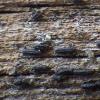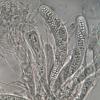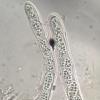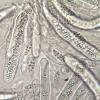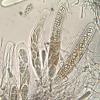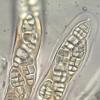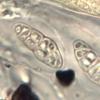
20-12-2025 23:08
Patrice TANCHAUDBonsoir, récolte sur sol sablonneux dans l'arri�

21-12-2025 09:32
Hello.A tiny ascomycete found embedded in wood in

20-12-2025 15:47
Mirek GrycHi.These grew on pine wood that was heavily covere

18-12-2025 21:17
Pol DebaenstThe identification took me to Byssonectria deformi

15-12-2025 07:09
 Danny Newman
Danny Newman
indet. Rutstroemiaceae sp. on unk. fallen leavesMc

19-12-2025 10:10
Patrice TANCHAUDBonjour, récolte réalisée en milieu dunaire, a

18-12-2025 17:23
 Bruno Coué
Bruno Coué
Bonjour,je serais heureux d'avoir votre avis sur c

18-12-2025 18:07
Margot en Geert VullingsThese plumes were found on rotten wood.They strong
I think it's a Hysterobrevium again (but not H. mori this time). The shape of the lirellae suggests Histeriales. On eboehm.com site I could see two possible species: H. smilacis and H. constrictum. The spores are more similar in shape to those of the latter, but the dimensions are closer to the former. On the other hand, the spores (of some) are surrounded by a gelatinous tissue, a characteristic that is also mentioned in the site for H. similacis. Can someone help?
The host is Cupressus lusitanica. The dimensions of the spores I got were:
(17.7) 18.9 - 23.3 (24.8) × (6.8) 7.2 - 9.1 (9.5) µm
Q = (2.3) 2.35 - 2.8 (3) ; N = 24
Me = 21 × 8.2 µm ; Qe = 2.6
Thanks in advance,
zaca
Hi Zaca,
Typical H. smilacis, I think. But you're right, it's not so far from H. constrictum. Eric Boehm wrote : "the illustrations depict a very thick wall and dictyospores highly symmetric in outline and septation". Septation is asymetrical in your collection.
Alain
Thanks for your opinion. Yes, the Septation is somewhat asymetrical.
I know that you collected it in several different hosts. DId it happen in Cupressus?
Best regards,
zaca

